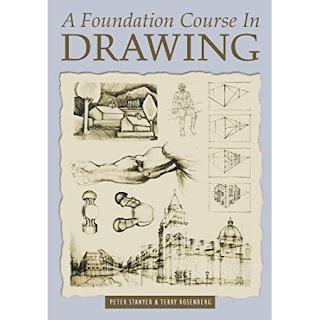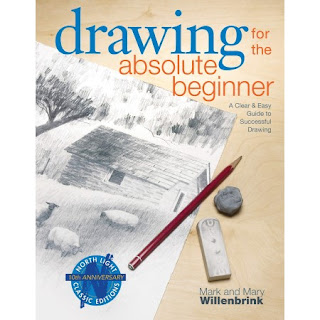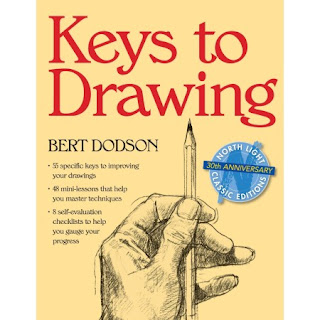Your home's walls having mold on them is a very frustrating and maybe deadly issue. Once you become aware of it, you must take action.
It can harm your home and cause health issues in addition to having an unpleasant smell and appearance.
We can assist if you're prepared to eliminate it. We'll walk you through how to spot the mold and how to permanently remove it.
Is That Mildew or Mold?
Fungi like mold and mildew grow in moist environments with insufficient ventilation. Condensation, humidity, and water leaks are the main sources of mold and mildew on walls.
Mildew has a powdery texture and is either gray or white. It can be discovered in damp places, laying on flat surfaces. Mildew is a surface mold, thus it won't harm the structure of your house.
A fungus called mold spreads through spores in the air. It typically has a fuzzy or slimy feel and is black, yellow, or green in color. Mold can harm your health and the structural integrity of your house.
Mold Symptoms on The Walls
On an interior wall, mold can develop everywhere. However, it's more likely to be found close to the floor, ceiling, or around the baseboard trim's borders. Although it can occur in other poorly ventilated spaces, such as laundry rooms, basements, and kitchens, bathrooms are where it occurs most frequently.
There are clear indicators that you have a mold issue in your house, such as:
- A wet or musty odour.
- Peeling and cracked paint.
- Visible mold development on your ceiling or walls.
- Indoors, allergy symptoms deteriorate.
If the mold is not removed right away, it will spread. It might become potentially harmful to your health and property.
According to studies, exposure to mold can lead to allergic reactions and bad health. You can have a runny nose, itchy eyes, and breathing issues. As a result, it's crucial to act right away if you see any mold symptoms.
How to Remove Mold From Walls
Mold on walls is typically simple to remove on your own as long as it only covers a limited area. You can use a variety of everyday items. Borax, vinegar, baking soda, tea tree oil, bleach, and hydrogen peroxide are a few common and efficient alternatives.
It could be dangerous to remove the mold yourself if it is severe and widely spread on your walls. To remove mold from your house safely and successfully, we suggest that you get in touch with a mold removal specialist.
1. Identify The Cause of The Mold
The first and most crucial step in eliminating mold from walls is this one. To ensure that mold does not recur, you must determine the cause and deal with the problem.
This entails managing moisture levels in your home and correcting any leaks or other sources of water damage that may have contributed to the mold.
2. Prepare Your Room and Clean The Walls
Wearing safety gear is advised before cleaning or treating the wall with any product. Wearing a mask, rubber gloves, and safety glasses helps shield you from mold exposure. While eradicating the mold, you must also make sure that the windows and doors are open.
Clear the area when you're prepared to begin eradicating the mold from the walls. Furniture, textiles, and electrical devices should all be removed from the impacted area. Put plastic sheets on the floor to protect it.
To eliminate any dirt, wipe the afflicted area with a moist sponge and dishwashing liquid.
3. Remove The Mold
It's probably on the surface if you see little mold patches on painted interior walls. You should be able to easily remove this with common household items. Borax, white vinegar, baking soda, or tea tree oil are a few alternatives.
Do the mold patches on a non-porous (painted or sealed) wall just cover a small portion of the wall? Then we advise you to start by utilizing a natural mold remover.
But what if you have a large mold growth problem? Or is it possible that the mold cannot be sufficiently removed by using natural remedies? You might wish to use a stronger chemical cleaning in this situation. This is available through home improvement retailers or online.
Mold doesn't just develop on the surface of porous walls constructed of cement, concrete, or stone. Additionally, it often spreads internally.
Therefore, the best remedy for mold on a porous (unsealed) wall is a mixture of hydrogen peroxide and distilled white vinegar.
Borax
One gallon of hot water and one cup of borax should be combined in a container. Shake vigorously with the lid on to completely dissolve the borax. Apply the solution to the troublesome area using a spray bottle.
With a brush, scrub the mold off the wall before wiping it clean. Let it air dry. Rinsing the solution off is not required. If you have addressed the mold problem's root cause, the borax will aid in preventing the mold from coming back.
Vinegar and Baking Soda
Using vinegar to destroy and prevent mold growth on porous or nonporous walls is a very safe and effective method. According to studies, white vinegar kills 82% of mold spores. According to reports, it seeps into porous materials and destroys the mold at its source.
Without dilution, pour some white distilled vinegar into a spray container. Vinegar should be sprayed onto the wall, then left for an hour. Next, use a sponge and warm water to thoroughly clean the area.
It could be required to scrub the mold after vinegar has been used to clean the wall. We advise you to prepare a baking soda solution for this.
You can use baking soda as a natural disinfectant to get rid of mold. Additionally, it deodorizes and aids in eliminating the musty, wet smell brought on by mold. And finally, it takes up moisture, which effectively prevents mold growth.
One teaspoon of baking soda and two cups of water should be combined in a spray bottle and well-shaken to create a baking soda solution. To get rid of the mold, spray the afflicted area with the solution and scrub the surface with a scrub brush or scouring pad.
After that, give the area a warm water rinse to get rid of any remaining mold on the surface. Finally, reapply the vinegar or baking soda solution to the wall to completely eradicate the mold.
Tea Tree Oil
Due to its antifungal and antibacterial qualities, tea tree essential oil is a highly efficient remedy for mold removal. To begin, fill a spray bottle with two cups of water and one teaspoon of tea tree oil. Spray the remedy on the moldy spot, then remove it with a clean towel.
Rinsing is unnecessary because the tea tree oil will kill the mold and stop it from growing again if you leave it on the surface. For eliminating mold and mildew from painted and wallpapered walls, this technique is advised.
Grapefruit Seed Extract
Another highly efficient natural mold remover is grapefruit seed extract. Mold is naturally eliminated by the grapefruit's citric acid, which attacks it. Additionally, it serves as a deodorizer and disinfectant.
Use 10 drops of grapefruit seed extract to 1 cup of water to make a solution that can be sprayed. Spray the solution onto the affected area after thoroughly combining it in the bottle with a shake. After a few minutes, remove the mold and solution with a clean cloth.
Longer exposure to the grapefruit seed extract will effectively kill the mold and prevent further growth. To stop it from growing back, you might want to repeat this procedure every two to three days.
Bleach
Mold can be killed by bleach on non-porous walls. On porous surfaces, it won't get through and harm the roots. However, make careful to test some of the bleach solutions on a discrete area of the wall before you start cleaning. This guarantees that the finish won't be harmed.
Apply the solution to the wall after combining one part bleach with three parts water. After waiting 10 minutes, use a brush to scrub the mold. Clean the area by rinsing with water and drying it with a fresh cloth.
Vinegar and Hydrogen Peroxide
Because it is anti-fungal, anti-viral, and antibacterial, hydrogen peroxide is great at eliminating mold. Hydrogen peroxide will make the solution stronger and safer to fight mould when mixed with distilled white vinegar. It doesn't emit poisonous fumes or leave behind toxic residue like bleach does.
Additionally, its effervescent qualities make it superior to bleach in terms of killing mold on porous surfaces. Both porous and non-porous walls can be cleaned using hydrogen peroxide.
Use a spray bottle to apply undiluted hydrogen peroxide with a three percent concentration to the afflicted area. After leaving on the surface for 10 to 15 minutes, use a brush to scrape the walls to get rid of the mold.
Variety of Wall
Depending on the kind of wall you have, the optimal mold removal method may vary slightly:
- Drywall: Because drywall is permeable and just the top layer is visible, mold loves to grow on it. Instead of using bleach, consider a vinegar solution. If the mold reappears, it is too deeply embedded, and replacing the drywall is the only option. Fortunately, mold-proof drywall is now readily accessible.
- Concrete: Brick or concrete both have pores. Therefore, the finest treatments are hydrogen peroxide or vinegar because they will completely eradicate the mold. Scrub with a brush to make sure you get all the molds.
- Cinder Blocks: For walls made of cinder blocks, you must first clean the surface. Apply the selected solution next, then scrub with a brush. Remove any remaining mold, add more solution, and let it set for up to 20 minutes. To avoid mold growing again, make sure the wall has thoroughly dried out.
- Wallpaper: Tea tree oil, grapefruit seed extract, or vinegar are the best treatments for mold on wallpaper. To avoid harming the wallpaper, dunk a sponge in the solution, then wring it out. Remember to try first at a discreet location! The mold can then be eliminated without saturating the wallpaper by gently rubbing in circles.
Guidelines for Avoiding Mold on Walls
Controlling moisture in your home is the best approach to stop mold and mildew from forming on your walls. By utilizing a dehumidifier and making sure all of your rooms are sufficiently aired, you may reduce the humidity in your house.
Mold in your home can also be caused by condensation. Insulating pipes, windows, outside walls, and roofs can help to prevent it.
Mold and mildew are especially common in bathrooms and kitchens. Make careful you routinely clean these spaces to stop the growth of spores.
Engaging a Mold Removal Specialist
The EPA advises hiring a professional to remove mold from your home's walls if there is a large amount. But they add that you need to make sure the contractor is licensed, covered by insurance, and skilled in mold removal.
Professionals who remove mold will adhere to a remediation process. Typically, they will begin by isolating the mold and examining samples of it. After determining the depth of your problem, they will develop a strategy to thoroughly eradicate mold from your property.
The eradication of the mold will then start. They will conduct tests and then produce a clearance report.
Clean Walls, Clean Home
You must act quickly if you spot mold growing on your home's walls to prevent it from spreading. It can compromise your home's structural integrity and health.
Fixing the source of the issue is crucial if you want to stop mold growth. After that, you can either clear the mold yourself or engage a professional, depending on the extent of the afflicted area.
Small mold spots are extremely simple to remove on your own. Products like borax, vinegar, baking soda, tea tree oil, bleach, and hydrogen peroxide are all easily available. However, you should seek professional assistance right away if mold has covered a sizable portion of a wall.




















